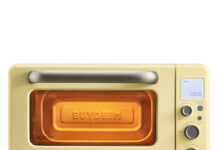Toy demand has grown steadily throughout the years.
With children staying at home during the Covid epidemic, it’s hardly surprising that toy sales grew faster than typical. Due to this, the worldwide toy market’s worth has been steadily rising.
Toy shop sales in the United Kingdom grew by 5% in 2020, creating a £3.3 billion industry. Toy sales in the United States rose by 16.7 % in 2020, reaching $32.6 billion. Since 2016, Australia’s toy sector has grown by 3.6% to reach $1.3 billion in sales by 2020.
This year, games and puzzles have the most significant dollar worth in the worldwide toy market.
In-store and online buying of toys remain popular, although internet shopping witnessed a significant spike towards the epidemic’s beginning. Toy e-commence has been rising in the United States for many years now, but most customers still prefer to purchase in person. As of 2021, year-over-year retail sales growth is again being driven by in-store purchasing, accounting for 61% of the year-over-year increase in retail sales.
Increased impulsive purchases from customers who see accessible items diminish price sensitivity in the face of retail product shortages.
Attract a broader range of buyers.
The addition of a toy section in your business will draw in a broader category of consumers, including those shopping for their children or the children of others.
Parents and children are a crucial group to target with the family-friendly appeal.
According to NRF research, parents feel their children have a more significant impact on buying decisions than either themselves or their parents. 56% of household purchases are influenced by Generation Z (those ages 6 to 24). Toys and games account for nearly all children’s discretionary spending, including clothing, entertainment, and food.
Toys may help your shop become more family-friendly, resulting in more customers spending more time in the store.
The next step is to enhance your whole product line.
Toys are a natural fit for a broad range of establishments, including retail stores, tourist attractions, visitor centers, and even private practices like veterinarians and dentists.
You should think about what toys will appeal to your current consumer base and how you might include them in your store.
Offering toys that appeal to adults, such as baby presents, soft toys, and classic toys, is a good strategy for a home and gift shop catering to adults and parents with more extensive spending power.
Offer toys that appeal to adults and children in your garden centre/visitor centre to match your company offerings. Also, create themed toy displays to complement the subject of your business.
Offer toys that appeal to youngsters and are also affordable as a tourist draw for families.
Fast-moving items that require minimal expenditure.
Pocket money toys are an excellent alternative for a low-cost product that provides a quick profit. With their bright colours, tactile qualities, and novelty or fidget appeal, these toys are popular with children.
As a result of their cheaper cost, they are not only acceptable to parents and grandparents but also within reach of youngsters on their own.
Ensure that these toys are displayed at a height that appeals to the youngsters you are trying to attract in your toy shop!
A chance to enhance retail stores.
There are many ways to use toys creatively to draw visitors’ attention to a shop.
To attract customers to your store, place toy displays at the door or window displays. A colorful display or toy stand may increase the allure of toys even more if you don’t have the floor room to do so.




































